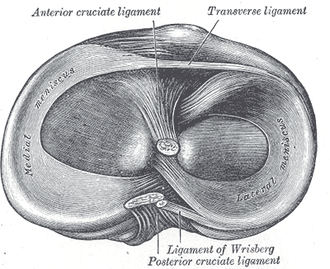- Home
- About Us
- TSPT Academy
- Online Courses
-
Resources
- Newsletter
- Business Minded Sports Physio Podcast
- Day in the Life of a Sports PT
- Residency Corner
-
Special Tests
>
-
Cervical Spine
>
- Alar Ligament Test
- Bakody's Sign
- Cervical Distraction Test
- Cervical Rotation Lateral Flexion Test
- Craniocervical Flexion Test (CCFT)
- Deep Neck Flexor Endurance Test
- Posterior-Anterior Segmental Mobility
- Segmental Mobility
- Sharp-Purser Test
- Spurling's Maneuver
- Transverse Ligament Test
- ULNT - Median
- ULNT - Radial
- ULNT - Ulnar
- Vertebral Artery Test
- Thoracic Spine >
-
Lumbar Spine/Sacroiliac Joint
>
- Active Sit-Up Test
- Alternate Gillet Test
- Crossed Straight Leg Raise Test
- Extensor Endurance Test
- FABER Test
- Fortin's Sign
- Gaenslen Test
- Gillet Test
- Gower's Sign
- Lumbar Quadrant Test
- POSH Test
- Posteroanterior Mobility
- Prone Knee Bend Test
- Prone Instability Test
- Resisted Abduction Test
- Sacral Clearing Test
- Seated Forward Flexion Test
- SIJ Compression/Distraction Test
- Slump Test
- Sphinx Test
- Spine Rotators & Multifidus Test
- Squish Test
- Standing Forward Flexion Test
- Straight Leg Raise Test
- Supine to Long Sit Test
-
Shoulder
>
- Active Compression Test
- Anterior Apprehension
- Biceps Load Test II
- Drop Arm Sign
- External Rotation Lag Sign
- Hawkins-Kennedy Impingement Sign
- Horizontal Adduction Test
- Internal Rotation Lag Sign
- Jobe Test
- Ludington's Test
- Neer Test
- Painful Arc Sign
- Pronated Load Test
- Resisted Supination External Rotation Test
- Speed's Test
- Posterior Apprehension
- Sulcus Sign
- Thoracic Outlet Tests >
- Yergason's Test
- Elbow >
- Wrist/Hand >
- Hip >
- Knee >
- Foot/Ankle >
-
Cervical Spine
>
- I want Financial Freedom
- I want Professional Growth
- I want Clinical Mastery
 Last week I woke up one morning with significant knee pain on the L side. I hadn't exercise or done any new activity the prior day. I simply woke up with knee pain. The pain was primarily located medially and was increased with any twisting or flexing of the knee beyond 90 degrees. It's one of those occasions where it is good to be a PT, because you can treat yourself and do so quickly! The typical presentation may lead some to think meniscus tear. While I believe I have meniscus tears in both knees, I think they are asymptomatic and I have had them for years. The fact that there was no mechanism of injury should lower meniscus as your diagnosis as well. Typically if I were to have an evaluation like this, I would check the spine and neural tension immediately even if I suspect local involvement. However, for myself I went straight to the knee due to rapid improvement. The significant findings were lack of knee flexion mobility, maybe a slight loss of end-range knee extension, but the most significant findings was decreased tibial IR on the symptomatic side. You can assess this with the patient seated by having them actively (or you perform passively) tibial IR (watch out for ankle inversion!). Often you will notice a loss of mobility on the involved side.
Like this post? Then check out the Insider Access Page for advanced content! And check out similar posts below!
4 Comments
11/11/2015 10:20:09 am
What does MWM stand for in "repeated tibial IR MWM into knee flexion"?
Reply
11/12/2015 08:46:40 am
Chris, I am curious if you could elaborate more on your thought process of trying flexion with IR first. Also, why not extension with IR?
Hi Lindsy, Leave a Reply. |
Dr. Brian Schwabe's NEW Book in partner with PaleoHacks!
Learn residency-level content on our
Insider Access pages We value quality PT education & CEU's. Click the MedBridge logo below for TSPT savings!Archives
July 2019
Categories
All
|







 RSS Feed
RSS Feed